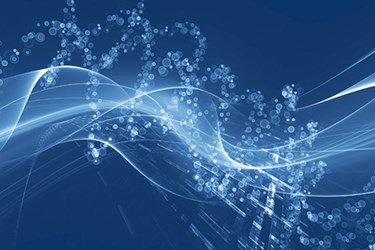The High Stakes Of Smart Water: $1 Trillion And 1.8 Billion People

By Usman Sindhu, product marketing manager, eMeter, A Siemens Business
Making the business case for smart water networks and advanced metering infrastructure
According to the American Water Works Association (AWWA), the U.S. will have to spend at least $1 trillion in the coming decades to improve its pipeline infrastructure. In addition, the United Nations predicts that 1.8 billion people will be living in countries with absolute water scarcity by 2025. These data points are not new, but utilities haven’t moved quickly enough to address these issues. The consequence is that utilities still lack the hardware and software tools to improve water infrastructure. Many water utility professionals ask the question: “Will smart water metering solve the overarching business problems?” The answer lies in looking at smart metering along with other smart water technologies to solve these challenges.
Market Trends Speak Loudly In Favor Of Smart Technologies
The Smart Water Summit, held in September 2014, tried to identify and discuss some of the pertinent challenges that utilities face today. Where do utilities stand on employing smart metering along with advanced metering infrastructure (AMI) and automatic meter reading (AMR) technologies?
- Summit participants noted that more than 40 percent of utilities have AMR technology in place; a mere 20 percent have AMI. The good news is that at least 45 percent of the utilities are planning to deploy AMI; the bulk of them have planned rollouts within the next 12 to 24 months.
- The most important features these utilities desire are data management, analytics, and improvements in billing processes.
- Cost of implementing smart technology is the biggest concern for these North American utilities.
Justifying cost and rate of investment is often the biggest impediment for smart water infrastructure. Smart metering and AMI deployments account for a small percent of the budget of overall smart water initiatives; therefore, utilities’ priorities often shift due to local and regional mandates that influence business drivers. For instance, data from the Smart Water Summit show that more than 80 percent of the utilities have factored water infrastructure upgrades and repairs in their capital plans. Sadly, building a smart water network is only a moderate priority in this capital budget.
The Value Proposition For Smart Water Metering
As previously mentioned, the biggest concern of deploying smart water infrastructure, including AMI, is cost. Water utilities run on constrained budgets and have a lean staff managing IT infrastructure. However, water scarcity issues can improve with a better water management process powered by smart meters/AMI and thus bring a fast ROI. But how does it work?
Smart water management entails water leak detection, water consumption analysis, and accurate billing driven by actual usage. Meanwhile, technical and nontechnical losses in water infrastructure arise due to the lack of metering.  At various points in the system — starting from water capture sources, wastewater treatment, production, and distribution — water is not metered, or there are very few to no mechanisms to detect leaks along the way. In addition, lack of meters hampers a utility’s ability to get accurate consumption information at the customer site. This means utilities have minimal insight to tackle technical and nontechnical water losses. The value proposition for smart metering and accompanying applications such as data management and analytics becomes quite apparent when we look at the magnitude of losses otherwise (Figure 1). Energy costs in water-related operations such as pumping, wastewater treating, and desalination can reach up to $4 billion a year. Utilities need tools and approaches to manage these rising energy costs.
At various points in the system — starting from water capture sources, wastewater treatment, production, and distribution — water is not metered, or there are very few to no mechanisms to detect leaks along the way. In addition, lack of meters hampers a utility’s ability to get accurate consumption information at the customer site. This means utilities have minimal insight to tackle technical and nontechnical water losses. The value proposition for smart metering and accompanying applications such as data management and analytics becomes quite apparent when we look at the magnitude of losses otherwise (Figure 1). Energy costs in water-related operations such as pumping, wastewater treating, and desalination can reach up to $4 billion a year. Utilities need tools and approaches to manage these rising energy costs.
Smart Metering Benefits And Applications
Integrated electric and water utilities have more success in not only making the case for smart metering but also in covering benefits from a joint AMI (electricity and water) deployment. When utility professionals deploy a common communication infrastructure and data management application, they have more control over the network and more choices for the consumer. For instance:
- One California water and electric utility had customers living under serious drought conditions. Demand and supply management was the primary driver for implementing smart meter and AMI along with data management application. The utility was able to process interval data that provide it with granular information about usage at each household. In turn, utility professionals can help customers manage consumption and help save water in a drought-stricken situation. The utility now has data to perform leak detection analytics to identify technical and nontechnical losses. The interesting fact is that customers with smart meters have much more accurate bills than the ones without smart meters.
- A Colorado-based, city-owned utility has gone above and beyond just collecting data from smart meters. It has a mobile application for customers to take proactive action. In this case, the utility wanted to empower customers to manage electricity and water commodities based on near realtime data. This information helps both utilities and customers handle demand management programs. This specific utility has seen customer consumption patterns change where timely information about usage is available. Customers who use mobile applications can save money, while the utility is able to process demand and supply of commodities. This approach has earned the utility recognition in the U.S. as a forward-looking enterprise.
Key Takeaways And Call To Action
- Adoption of two-way metering and communication is slow in the U.S. and around the globe. However, utilities that have deployed two-way communication and metering have seen benefits in more accurate billing, better situational awareness, and additional data to perform technical and nontechnical loss analysis.
- Leak detection is the foremost driver among smart water applications for utilities. Leak detection is useful for both AMR and AMI networks. However, AMI improves the data quality and frequency that provides accurate data for leak detection.
- Utilities with limited budgets should start small and focus on data quality and frequency of collection. Improving data quality is the first step on the maturity curve to get visibility into critical issues.
About The Author

Usman Sindhu is a product marketing manager for eMeter, A Siemens Business. Prior to joining eMeter/Siemens, he served as a senior industry analyst at IDC Energy Insights and as a researcher for Forrester Research. An active speaker and blogger, Sindhu looks at the intersection of technology and business-model changes in the utility industry.
